Abstract
Neuromedin B (NB) is a recently discovered neuropeptide related to bombesin. It is localized to thyrotropes and we have previously shown that it directly inhibits thyrotropin (TSH) release from the anterior pituitary gland of euthyroid rats. In the current studies, we further evaluated the action of NB and antiserum directed against it in euthyroid rats and compared the actions with those in hypo- and hyperthyroid rats. Rats were rendered hypothyroid by treatment with propylthiouracil and hyperthyroid by treatment with thyroxine. In euthyroid rats, NB suppressed TSH release from hemipituitaries in vitro. Incubation of these pituitaries with highly specific antiserum against NB produced a stimulation of TSH release, whereas normal rabbit serum had no effect on the output of TSH. Thus, in euthyroid animals NB is a physiologically significant inhibitor of TSH release from the pituitary. In hypothyroid as in euthyroid animals, NB inhibited TSH release when microinjected into the third ventricle (3V) in the same dose (0.5 micrograms; 0.44 nmol) as in euthyroid rats. TSH release from hemipituitaries of hypothyroid animals was also suppressed by NB as in euthyroid animals. In hypothyroid animals, anti-NB antiserum was ineffective both in vivo after its microinjection into the 3V and in vitro on hemipituitaries, which suggests that the peptide has little physiologic significance in this condition, presumably because of its reduced release from the thyrotropes associated with diminished NB content in the pituitary of the hypothyroid rat. Intraventricular injection of NB failed to lower plasma TSH in hyperthyroid rats, which suggests that the action of the peptide is already maximal in hyperthyroidism. When antiserum to NB was microinjected twice into the 3V, there was a delayed increase in plasma TSH manifest 24 hr after the initial injection. TSH release from pituitaries of these animals was markedly increased in the presence of NB antiserum. Thus, NB has a physiologically significant TSH release-inhibiting action at the pituitary in the hyperthyroid as well as in the euthyroid rat. We conclude that in the euthyroid animal NB acts in an autocrine fashion to suppress TSH release from the thyrotropes directly. In hypothyroidism, NB synthesis and presumably release from the pituitary is decreased, such that there is no physiologic significance to the residual NB release, although the responsiveness to the inhibitory action of the peptide is increased, possibly via upregulation of its postulated receptors on the thyrotrope. In hyperthyroidism, the concentration of NB in thyrotropes and presumably its release is increased so that it has a physiologically significant TSH release-inhibiting action.
Full text
PDF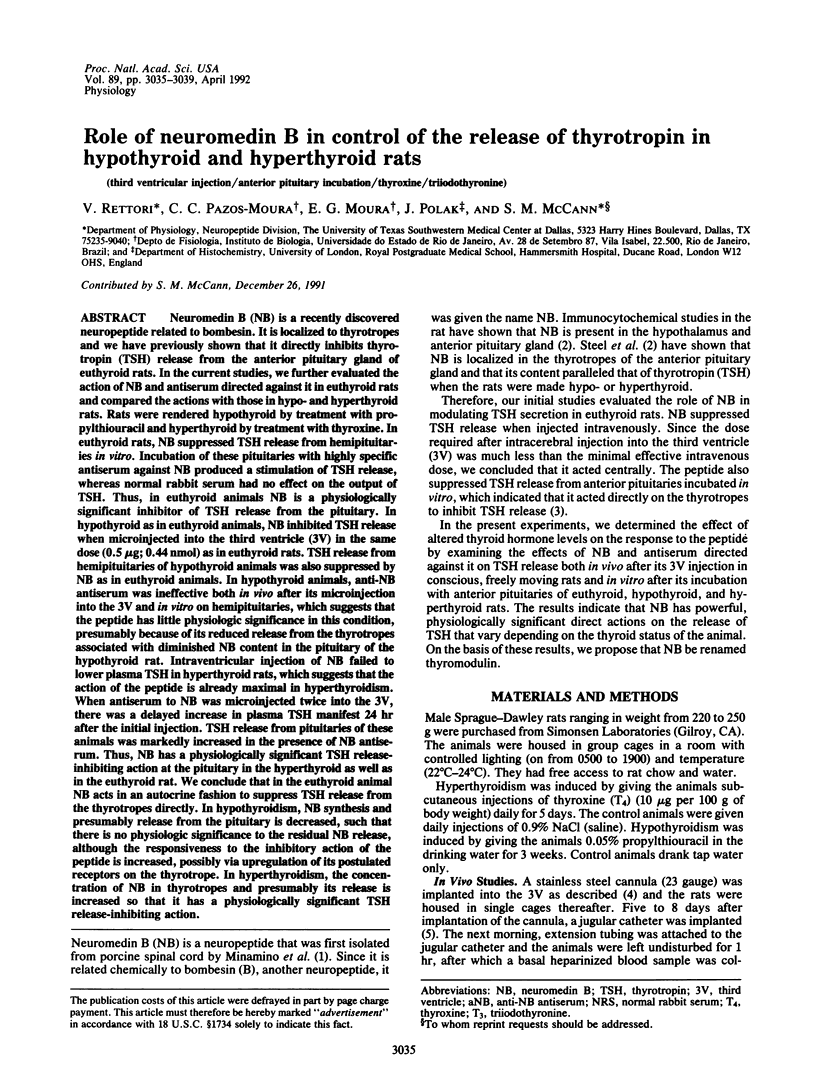
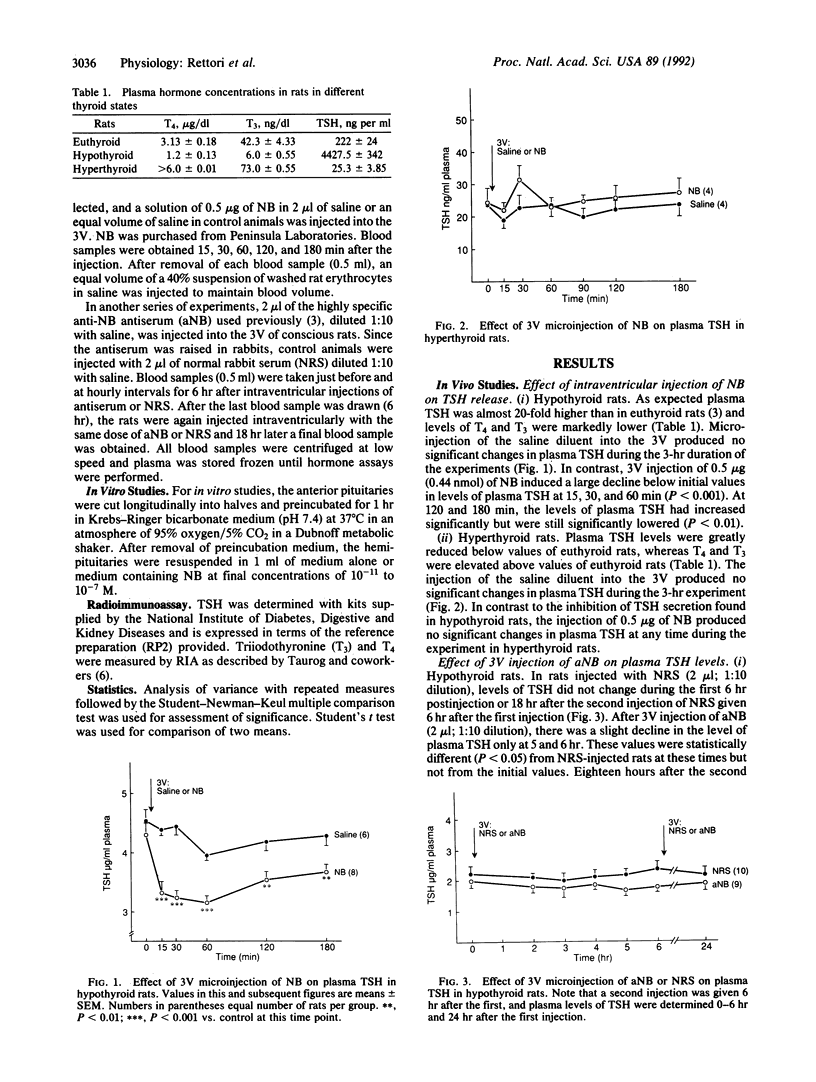
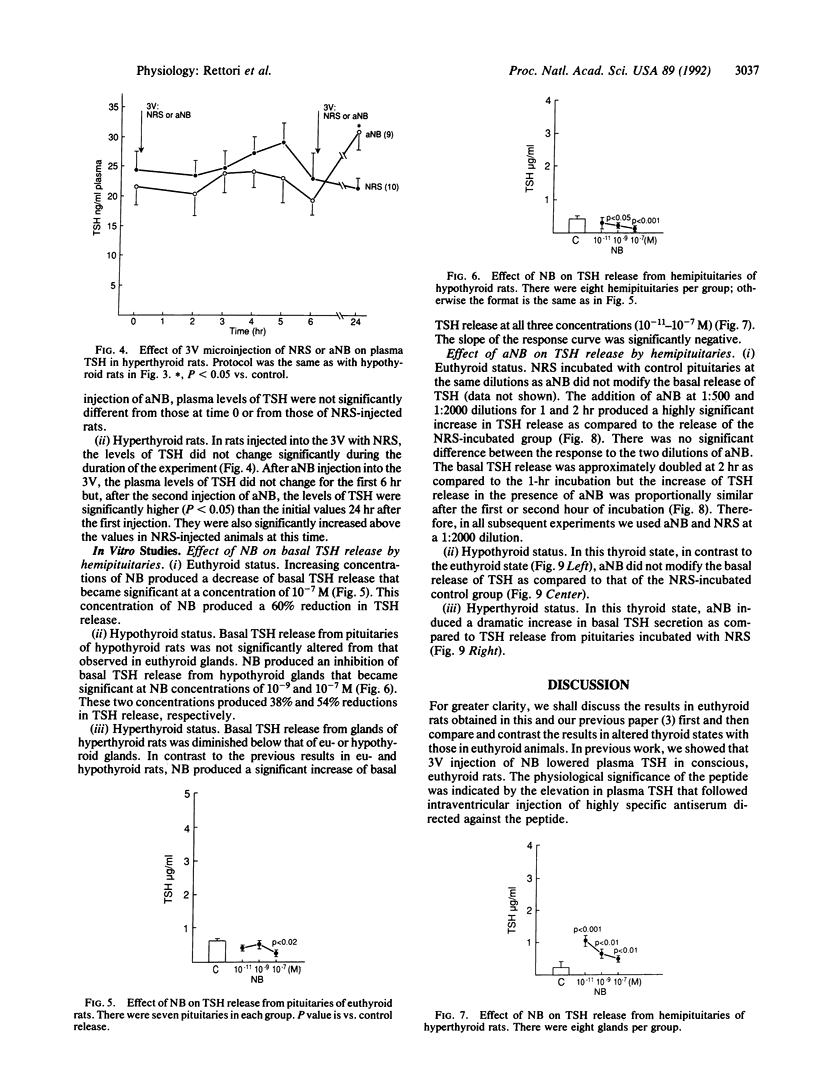
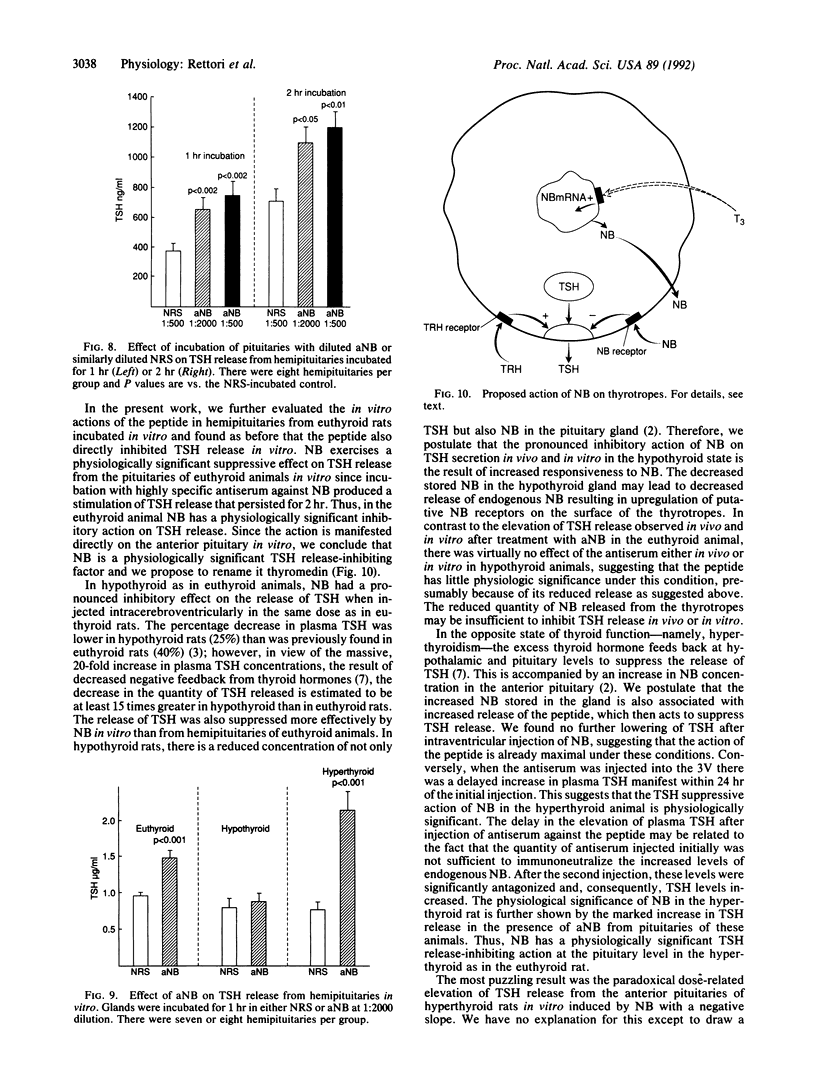
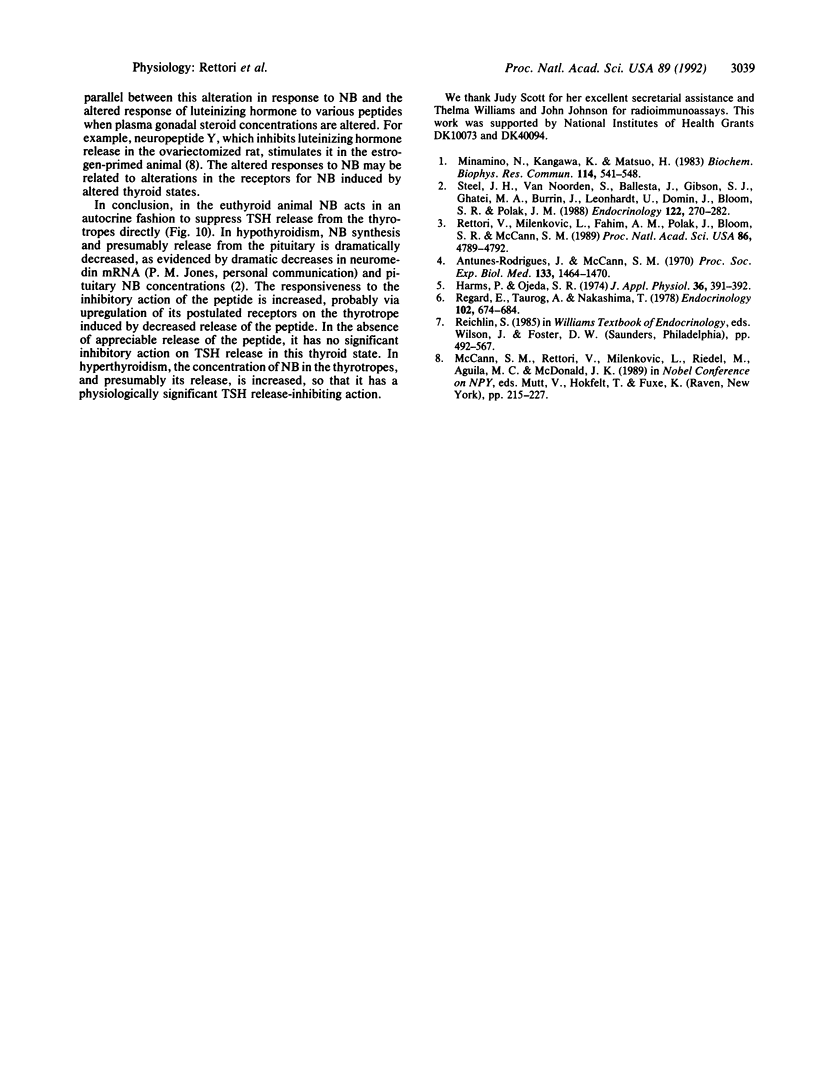
Selected References
These references are in PubMed. This may not be the complete list of references from this article.
- Antunes-Rodrigues J., McCann S. M. Water, sodium chloride, and food intake induced by injections of cholinergic and adrenergic drugs into the third ventricle of the rat brain. Proc Soc Exp Biol Med. 1970 Apr;133(4):1464–1470. doi: 10.3181/00379727-133-34713. [DOI] [PubMed] [Google Scholar]
- Harms P. G., Ojeda S. R. A rapid and simple procedure for chronic cannulation of the rat jugular vein. J Appl Physiol. 1974 Mar;36(3):391–392. doi: 10.1152/jappl.1974.36.3.391. [DOI] [PubMed] [Google Scholar]
- Minamino N., Kangawa K., Matsuo H. Neuromedin B: a novel bombesin-like peptide identified in porcine spinal cord. Biochem Biophys Res Commun. 1983 Jul 29;114(2):541–548. doi: 10.1016/0006-291x(83)90814-8. [DOI] [PubMed] [Google Scholar]
- Regard E., Taurog A., Nakashima T. Plasma thyroxine and triiodothyronine levels in spontaneously metamorphosing Rana catesbeiana tadpoles and in adult anuran amphibia. Endocrinology. 1978 Mar;102(3):674–684. doi: 10.1210/endo-102-3-674. [DOI] [PubMed] [Google Scholar]
- Rettori V., Milenkovic L., Fahim A. M., Polak J., Bloom S. R., McCann S. M. Role of neuromedin B in the control of the release of thyrotropin in the rat. Proc Natl Acad Sci U S A. 1989 Jun;86(12):4789–4792. doi: 10.1073/pnas.86.12.4789. [DOI] [PMC free article] [PubMed] [Google Scholar]
- Steel J. H., Van Noorden S., Ballesta J., Gibson S. J., Ghatei M. A., Burrin J., Leonhardt U., Domin J., Bloom S. R., Polak J. M. Localization of 7B2, neuromedin B, and neuromedin U in specific cell types of rat, mouse, and human pituitary, in rat hypothalamus, and in 30 human pituitary and extrapituitary tumors. Endocrinology. 1988 Jan;122(1):270–282. doi: 10.1210/endo-122-1-270. [DOI] [PubMed] [Google Scholar]


